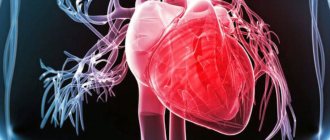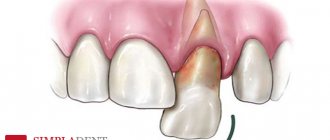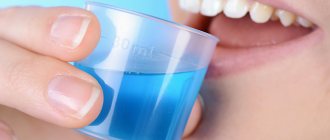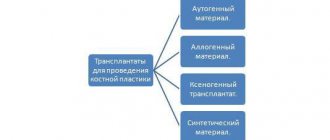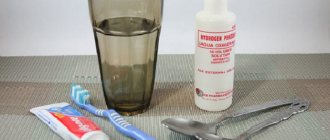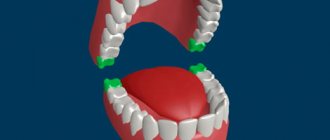Content:
- Methods used in dental practice
- Medicines that are most often used in the dental office
- What affects the duration of the anesthetic effect?
- What to do to quickly forget about dental intervention
- After what time can you eat?
Most people are afraid to have their teeth treated because they are afraid of pain.
It seems to them that any medical manipulation will cause them serious discomfort. Fortunately, the days of painful dental procedures are far behind us. Today, using highly effective anesthetics, doctors manage to make even the most complex procedures comfortable for the patient and completely painless. Meanwhile, some clients have a question about how long the anesthesia wears off after tooth extraction or pulpitis treatment. They are embarrassed by a long-lasting feeling of numbness. Let's consider this issue in more detail.
Types of anesthetics and their features
Exactly how long anesthesia lasts after dental treatment depends on what type of anesthesia is used.
The following types of anesthesia are used in modern dentistry:
- Applique. The main feature is a short period of action. It is a gel or spray for surface use. Use is limited to a small number of procedures that do not require significant anesthesia for a long period. These drugs can be used as auxiliary drugs.
- Infiltration. Such anesthesia must be injected with a syringe into the area of bone tissue or periosteum. It is used for many procedures, including cleaning dental canals. Valid for an hour.
- Conductor. The product acts directly on the trigeminal nerve area. The injection may cause severe pain, which can be relieved with another anesthesia. Used to treat molars.
- Intraligamentary. It is aimed at a specific tooth for various procedures - chipping occurs around the diseased incisor. Used for tooth extraction or complex operations.
Articaine series
Articaine is a common painkiller used throughout the world. It is available in various forms and dosages, which allows you to choose the optimal anesthetic for the patient. It can be combined with medications of the adrenaline group, which allows you to narrow blood vessels and prevent possible blood loss.
This anesthetic is stronger in effect than traditional painkillers: five to six times than lidocaine and two to three times than novocaine. Anesthesia can be performed in such a way that it will not harm either patients with contraindications or pregnant and lactating women.
The duration of tooth freezing can be selected so that the anesthesia after tooth treatment begins to wear off immediately after the end of the intervention and does not cause discomfort.
Mepivacaines
This is a special group of anesthetics that does not require combination with adrenaline. Due to this, it is less effective. But thanks to its formula, it can be prescribed for the treatment of pregnant women, patients with cardiovascular diseases and is used to treat children.
It is used in dentistry not only during treatment and procedures, but also to reduce pain after their completion, for example, as painkillers after wisdom tooth removal. The use of the drug allows you to painlessly treat severe cases of dental diseases.
It has contraindications, so before use a sensitivity test is required, which will determine how long the effect will take and how the patient will tolerate anesthesia.
Methods used in dental practice
How long it takes for the anesthesia effect to disappear depends directly on the method of anesthesia used. The sensitivity of tissues is restored most quickly when using an application. The doctor applies a special gel to the area of upcoming manipulations, which “freezes” for about fifteen minutes.
If the anesthetic medication was administered using a syringe and needle, the area will remain numb for up to one to three hours. The exact time is determined by the location of the treated area, the dose and type of drug.
Anesthesia methods
Anesthesia can be local or general. The local form is divided into external and injection methods.
The external method allows you to anesthetize superficial tissues using medicinal substances. These can be special ointments, gels, devices with electromagnetic waves, simply applications. The last method is used most often. The application is a cooling plate. It is applied to the gums, and the patient does not feel pain. This method is usually used to remove baby teeth in children.
The injection method involves injecting an anesthetic substance through a needle.
There are 4 types of anesthesia:
- Conductor. The method allows you to anesthetize several teeth at once. An anesthetic is injected into the area of the last tooth where the branch of the nerve is affected, resulting in blockage of the entire nerve.
- Infiltration. An anesthetic substance is injected into the projection area of the apex of the tooth root.
- Intraligamentous. The medicine is administered through the gum. As a result, the tooth and the surrounding gum area are numbed. For this method, a special syringe with a dispenser is used. It allows you to administer a minimum of anesthetic substance.
- Intraosseous. It is the best anesthesia. In this case, the injection is made directly into the spongy bone. It is she who covers the dental alveoli.
General anesthesia (anesthesia) is done very rarely.
It should not be used for people who have heart problems. This method of anesthesia is used only in the most difficult cases. Dentistry must be equipped with a special office and all the necessary equipment. And also during surgical operations, the presence of an anesthesiologist next to the patient is mandatory.
Only the doctor decides which anesthesia is best for tooth extraction. Everything will depend on the complexity of the procedures and the general condition of the tooth.
Medicines that are most often used in the dental office
If you need to numb a tooth, the doctor may use different drugs. The list of the most popular includes:
- Novocaine. Has a short period of action.
- Lidocaine and products containing articaine. Provides a medium-duration analgesic effect.
- Bupivacaine, Hirocaine, Ropivacaine. They have a long period of action.
The doctor determines which drug to choose taking into account the complexity of the upcoming treatment procedures. It is important that the patient is not allergic to the prescribed anesthetic.
Local anesthetics in dentistry –
At the moment, the most modern anesthetics in dentistry are drugs based on articaine hydrochloride. We have already said above that this group also includes Ultracain, Ubistezin, Septanest and others. Anesthetics of the articaine series are more effective than lidocaine - 1.5-2 times, and Novocaine - 5-6 times. As for the duration of anesthesia with drugs based on articaine, it will depend, among other things, on the concentration of vasoconstrictors in the anesthetic composition.
Vasoconstrictors, due to the narrowing of blood vessels at the injection site, can reduce the leaching of the anesthetic, and this leads to an increase in the depth and duration of anesthesia. Manufacturers always produce the same anesthetic with different concentrations of vasoconstrictors. The following concentrations of the vasoconstrictor epinephrine are usually used - 1:100000, 1:200000 + option and without a vasoconstrictor at all. This allows for optimal use of the drug in patients of different risk groups. The most commonly used anesthetics are:
1) Anesthetic “Ultracaine” –
The anesthetic Ultracaine is produced in France in 3 possible versions, which will differ in the presence/absence of epinephrine in the composition, as well as its concentration. A separate article is devoted to this most popular and safe anesthetic (link above). Forms of release of ultracaine:
- “ultracaine DS forte” (with epinephrine concentration 1:100,000),
- “ultracaine DS” (with an epinephrine concentration of 1:200,000),
- "ultracaine D" (without epinephrine, without preservatives).
2) Ubistezin - instructions for use
Good anesthetic, produced (Germany). The composition of Ubistezin is absolutely no different from similar forms of Ultracain, and there are only different release forms. The first option is “Ubistezin” (with an epinephrine concentration of 1:200,000), and the second is “Ubistezin forte” (with an epinephrine concentration of 1:100,000).
Read a detailed description of the anesthetic and its indications for use here: → Ubistezin forte - instructions for use (PDF)
3) Septanest: instructions for use
Septanest has been used in dentistry for a very long time. This anesthetic has 2 release forms with adrenaline concentrations of 1:100,000 and 1:200,000. But compared to ultracaine and ubistezin, this anesthetic contains a slightly larger amount of preservatives (sodium metabisulfite and EDTA), which is undesirable in a number of patients, for example, with frequent allergic reactions, bronchial asthma, etc.
Read a detailed description of the anesthetic and its indications for use here: → Septanest 1:100,000 – instructions for use (PDF)
4) Scandonest: instructions for use
Anesthetic from Septodont (France) based on 3% Mepivacaine.
Does not contain vasoconstrictor components or preservatives. Scandonest in dentistry is used mainly only in patients at risk who cannot take anesthetics with adrenaline and epinephrine, as well as in patients with bronchial asthma. A complete analogue of Scandonest is the anesthetic Mepivastezin, produced (Germany). Read a detailed description of the anesthetic and indications for use here: → Scandonest - instructions for use (PDF)
What affects the duration of the anesthetic effect?
The same drug may work differently in different people. For example, for some the analgesic effect disappears in one hour, while for others it lasts two or even three hours. What affects the duration of anesthesia, besides the pharmacological characteristics of the drug itself? There are several fundamental factors:
- The presence of inflammation in the anesthetized area. For example, after the removal of a wisdom tooth that was painful, the rehabilitation period is always delayed. The fact is that the active compounds of anesthetics have an alkaline environment, and in a localized inflammatory focus it is acidic. The combination of the two media causes neutralization of the alkaline composition of the drug. Because of this, the pain relief effect either does not develop at all or disappears very quickly. With advanced inflammation, it is very important to correctly calculate the optimal amount of pain medication so that the patient does not feel acute pain during treatment.
- The inclusion of components in the administered drug that promote spasm of blood vessels. Such substances make the anesthetic more effective and increase the duration of its action.
- Patient's age. It is more difficult for older people to obtain pain relief, and the anesthetic effect lasts longer.
- The presence of diseases of internal organs. Metabolites of dental drugs are eliminated from the body due to the work of the kidneys and liver. If there are diseases of these organs, anesthesia lasts longer.
- Experience and accuracy of the dentist. When giving an injection, the doctor must follow the injection technique and accurately calculate the dose. Any mistake makes the result of using an anesthetic unpredictable.
Why does anesthesia not go away after dental treatment?
Sometimes the effect of the painkiller lasts longer than expected. The patient can try to reduce the effect of the anesthetic at home. To do this, apply a non-hot compress or massage to the site of anesthesia during the day. This will lead to expansion of the capillaries, which will speed up the removal of active substances from the anesthetized area, and the anesthesia will wear off faster.
In this case, you need to contact your doctor for advice. In addition, these measures are permissible if a filling is placed, but in no case after tooth extraction.
To ensure that the drug does not last longer than necessary, the patient’s liver should not be overloaded, since it is the liver that is responsible for removing the drug from the body. You should also not drink alcoholic beverages immediately after visiting the dentist.
Sometimes anesthesia may not go away due to complications. The main reason for the long-term effects of anesthesia is damage to the nerves of those organs where the zone of anesthesia was located. This may require the help of not only a dentist, but also a neurologist. This occurs both when the pain medication is administered incorrectly, and as a result of the treatment itself.
The prolonged effect of anesthesia should not create panic. The normal duration of anesthesia after injection of an anesthetic into the upper jaw is 2-3 hours, for the lower jaw - 4-5 hours.
If, during these standard dental procedures in the oral cavity, the tooth was anesthetized for a longer period of time, headaches, chills, or general malaise appeared, it is necessary to seek qualified help in a timely manner. The specialist will determine the cause and take measures to ensure that the anesthesia wears off in accordance with the norms.
Sometimes physical therapy may be necessary to eliminate negative symptoms. But cases where anesthesia takes too long to wear off are rare. Also, prolonged exposure to anesthesia is a result of the patient's hypersensitive reaction to the drug.
What to do to quickly forget about dental intervention
Very often, upon returning home, the patient continues to feel numbness in part of the jaw. This condition can cause discomfort and even mild aching pain. In order for tissue sensitivity to be restored as quickly as possible, the following rules should be followed:
- On the eve of planned dental procedures, avoid drinking alcohol , fatty and heavy foods. If a specialist recommends taking any medications, it is important to follow his prescription.
- In the case of treating caries , removing tartar, grinding down the top layer of enamel under a crown, it is permissible to massage the gums. You can also drink warm tea or heated water. These simple methods will increase local blood circulation and create conditions for the speedy release of anesthesia. But, if anesthesia was administered before tooth extraction, there should be no talk of any self-massage - touching the hole with your hands is strictly prohibited. Otherwise, you can damage the blood clot that protects the wound from the penetration of bacteria and germs. This will lead to severe inflammation and bleeding.
Don't be alarmed if the anesthetic continues to work for up to six hours. The situation will normalize on its own. If the numbness does not go away longer, this is a reason to consult a dentist again.
Anesthesia after tooth extraction
After the tooth has been removed and the anesthesia has begun to wear off, pain may occur. Sometimes the pain symptoms are very strong and unbearable to endure. In this case, they resort to repeated anesthesia. The most common pain reliever offered by dentists is Ketanov.
Ketanov is able to relieve a person from severe and sharp pain.
It is often prescribed after surgery. The drug can be used every six hours, but not more than one week.
Like any medicine, Ketanov has side effects. These include:
- drowsiness;
- dyspeptic disorders;
- the appearance of dry mouth;
- accelerated heartbeat.
The drug should not be taken by people who have:
- bronchial asthma;
- ulcer of the duodenum and stomach;
- kidney diseases.
It is also undesirable for women to use during lactation and pregnancy.
If after three days pain or swelling occurs again, you should immediately consult a doctor.
Medicines you shouldn't take
Many people use homemade medications for pain relief. But they have low efficiency and can provoke undesirable results:
- Aspirin. The medicine is intended to perform an antipyretic function. The analgesic effect is minimal. Aspirin is a good blood thinner. This may lead to delayed bleeding. Although this medicine is included in many painkillers.
- Paracetamol. The drug can only cope with mild headaches. It has no anti-inflammatory effect and has a negative effect on the liver. Included in painkillers as an adjuvant.
- No-shpa. Many people think that this medicine is a pain reliever. But that's not true. No-spa is an antispasmodic drug that only eliminates pain associated with spasms. The pain after tooth extraction is completely different and no-spa will not be able to cope with it.
Eating after removal
It is not recommended to eat salty and spicy foods after tooth extraction. They irritate the mucous membrane and increase pain. Consuming hot food and drinks can cause bleeding and increase swelling.
Many people have been afraid to eat ice cream for a long time, claiming that they will catch a cold. Cold food has no effect on this. This problem can be caused by general hypothermia of the body or a draft. The main thing is to eat the ice cream slowly and not bite into large pieces. This delicacy is even recommended, because it forces the blood vessels to constrict, which means that there is no risk of bleeding.
Category: Tooth extraction Published by Mister stomatolog
